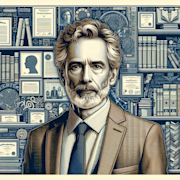Through the Looking-Glass, and What Alice Found There by Lewis Carroll

Lewis Carroll’s sequel to the beloved Alice’s Adventures in Wonderland, Through the Looking-Glass, and What Alice Found There, takes readers on another whimsical journey through a fantastical world. In this blog post, we will explore the themes, characters, and literary techniques that make this novel a timeless classic.
A Reflection of Reality: Themes in Through the Looking-Glass
One of the central themes of Through the Looking-Glass is the concept of reflection and perception. In this sequel, Alice enters a world that is mirrored to her own, where everything is reversed and inverted. This theme highlights the idea that reality is often subjective and can be perceived in different ways depending on one’s perspective.
Another important theme in the novel is the idea of growth and self-discovery. Throughout her adventures in the looking-glass world, Alice encounters various challenges and obstacles that force her to confront her own limitations and fears. Through these experiences, Alice learns valuable lessons about courage, resilience, and the power of imagination.
The Eccentric Characters of Through the Looking-Glass
One of the most enchanting aspects of Through the Looking-Glass is its colorful cast of characters. From the quirky White Queen to the enigmatic Humpty Dumpty, each character that Alice encounters adds a unique dimension to the story. Through these characters, Carroll explores themes of identity, absurdity, and the unpredictable nature of the world.
The character of the Red Queen is particularly intriguing, as she embodies the concept of constantly moving but never getting anywhere. Her dialogue with Alice about believing in impossible things before breakfast is a classic example of Carroll’s wit and wordplay.
Wordplay and Literary Techniques in Through the Looking-Glass
Lewis Carroll was a master of wordplay and linguistic invention, and this talent is on full display in Through the Looking-Glass. The novel is filled with clever puns, riddles, and poems that showcase Carroll’s playful and imaginative approach to language.
One of the most famous passages in the book is the poem “Jabberwocky,” a nonsensical yet captivating piece of verse that has captured the imagination of readers for generations. Through his use of language, Carroll creates a world that is both familiar and strange, inviting readers to explore the boundaries of logic and imagination.
The Legacy of Through the Looking-Glass
Through the Looking-Glass, and What Alice Found There may have been published over a century ago, but its legacy continues to endure. The novel has inspired countless adaptations, sequels, and reimaginings across various media, cementing its status as a timeless classic of children’s literature.
More than just a whimsical tale of a young girl’s adventures in a fantastical world, Through the Looking-Glass is a profound exploration of the human experience. Its themes of perception, growth, and the power of imagination resonate with readers of all ages, reminding us that there is always more than meets the eye.
In conclusion, Through the Looking-Glass, and What Alice Found There is a literary treasure that continues to captivate and enchant readers with its imaginative storytelling and profound themes. With its eccentric characters, clever wordplay, and timeless wisdom, this novel is a true masterpiece that will continue to inspire and delight generations to come.

Johnathan Evans
Journalist
More From Classics Authority Books

Book
Wuthering Heights by Emily Brontë

Book
Aldous Huxley's Brave New World: Dystopia and Technological Anxiety

Book
The Return of the Native by Thomas Hardy

Book
Salinger's Franny and Zooey: A Spiritual Quest in New York City

Book
A Dickensian Journey: Immersing Ourselves in the World of Great Expectations

Book
Dicken's A Tale of Two Cities: Revolution and Resurrection





